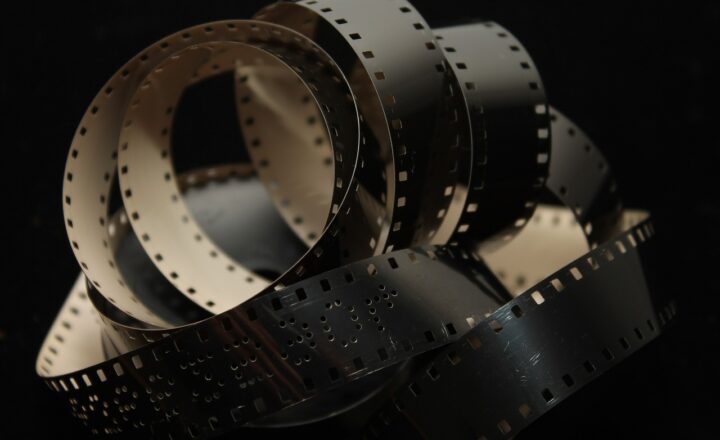
Scary movies have long been a staple of popular culture, serving not only as a source of entertainment but also as a mirror reflecting societal fears and anxieties. From the early days of silent films to the modern era of psychological thrillers, the horror genre has undergone significant evolution, capturing the zeitgeist of each era and revealing the underlying fears that resonate with audiences. In this article, we will explore the fascinating journey of scary movies, tracing their evolution through time and highlighting how they embody the cultural fears of their respective eras.
1. The Birth of Horror: Silent Films and Early Expressions of Fear
The roots of horror cinema can be traced back to the silent film era of the early 20th century. Films such as “The Cabinet of Dr. Caligari” (1920) and “Nosferatu” (1922) introduced audiences to visually striking narratives that evoked feelings of dread and fascination.
The dark expressionism and unnerving plots in these films were reflective of post-World War I anxieties, particularly regarding authority, madness, and the unseen dangers lurking in society. The horror genre allowed filmmakers to explore societal tensions and the psychological turmoil of individuals in an ever-changing world. As these early films unfolded, they laid the groundwork for the elaborate narratives and deep psychological explorations that would define the genre for decades to come.
2. The Golden Age of Horror: The 1930s to 1950s
The 1930s to the 1950s marked the Golden Age of Horror, featuring iconic films such as “Frankenstein” (1931) and “Dracula” (1931). This era brought forward a resurgence of interest in gothic themes, monsters, and the supernatural. The cultural landscape of this time was heavily influenced by the Great Depression and the looming threat of World War II.
Monsters became allegories for the fears of the day, serving as visible manifestations of people’s dread surrounding societal upheaval and the loss of control. The Universal Horror films played on these themes, exploring how fear can warp our understanding of humanity and morality. The dualities of good and evil, explored through monstrous figures, showed audiences the fragility of civilization, ultimately leading to fear of the unknown.
3. The Rise of Psychological Horror: 1960s to 1980s
Entering the 1960s, horror filmmakers began to shift their focus from supernatural creatures to psychological horror. Alfred Hitchcock’s “Psycho” (1960) is often regarded as the catalyst for this shift, showcasing the terror that arises from the human psyche. As the fear of nuclear war and societal collapse took center stage during the Cold War, horror films began to reflect these anxieties through narratives centered on paranoia and manipulation.
Films such as “The Exorcist” (1973) and “Rosemary’s Baby” (1968) incorporated religious themes and existential fears into their plots, emphasizing the idea that real terror often lies within ourselves rather than in external forces. Similarly, the rise of the slasher genre during the late 1970s and early 1980s – exemplified by “Halloween” (1978) and “Friday the 13th” (1980) – highlighted societal concerns about youth culture, sexual promiscuity, and violence, often portraying the consequences of societal decay and moral decline.
4. The Decade of Self-Referential Horror: 1990s to Early 2000s
As the 1990s approached, horror films began to exhibit a meta-awareness of their genre. With the release of films like “Scream” (1996), creators started to dismantle traditional horror tropes, inviting audiences to engage in a dialogue about horror films themselves. This era’s distinctive self-referential style coincided with the internet age’s rise, as technology and youth culture became integral components of the horrors explored.
The fear of identity theft, societal judgement, and the consequences of technology were prevalent themes that reflected the anxieties of the digital era. Moreover, the ‘torture porn’ subgenre, seen in films like “Saw” (2004), forced audiences to confront their desensitization to violence and suffering, demonstrating the evolution of fear in a society increasingly exposed to graphic content.
5. The New Wave of Horror: 2010s and Beyond
In recent years, horror has experienced a renaissance, characterized by a diverse range of styles and themes. Filmmakers such as Jordan Peele in “Get Out” (2017) and Ari Aster in “Hereditary” (2018) explore deeply rooted societal issues, including race relations, mental health, and family dysfunction. Unlike previous generations, modern horror films often depersonalize the antagonist, exploring how the horrors stem from systemic issues in society.
The climax of this evolution is evident in films such as “The Babadook” (2014), where horror serves as a metaphor for grief and maternal anxiety, illustrating how fears manifest in profound ways. Similarly, films that emphasize environmental fears, such as “A Quiet Place” (2018), probe the human relationship with nature in an era dominated by global warming and political instability.
6. Conclusion: The Ever-Changing Landscape of Fear
Scary movies have continuously evolved to reflect the changing cultural fears of each era, from silent films to the modern psychological thrillers of today. They offer a glimpse into our deepest anxieties, functioning as cultural barometers that critique, question, and analyze the society we live in. By capturing the shifting landscape of fears, horror films not only entertain but also prompt critical reflection on our cultural environment, reminding us that even in fear, there is a constant thread connecting humanity through our collective anxieties.
As technology advances and societal dynamics shift, the horror genre will undoubtedly continue to evolve, relentlessly adapting to reveal the fears, worries, and hopes of audiences around the world.
By understanding the history and evolution of horror, we gain insight into the human experience itself—a journey shaped as much by fear as by triumph.







